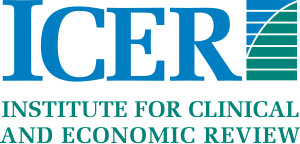— CEPAC confirms the strength of evidence supporting use of home sleep testing in the diagnosis of OSA in adults —
Boston, Mass., January 25, 2013 – Members of the New England Comparative Effectiveness Public Advisory Council (CEPAC) recently convened in Hartford, CT to vote on the evidence on diagnostic strategies and treatment options for obstructive sleep apnea (OSA) in adults. The results of this meeting, including CEPAC’s votes on the comparative clinical effectiveness and value of various diagnosis and treatment options for OSA, have been translated into a final report and Action Guide to help decision makers interpret and use the best available evidence in policy and practice. The Action Guide summarizes CEPAC’s findings and presents a list of specific evidence-based steps for patients, clinicians, and insurers that aim to improve patient outcomes and the overall value of OSA services.
“As at our previous meetings, CEPAC members tackled a clinical area involving multiple diagnosis and treatment options about which there are important concerns regarding comparative effectiveness and value,” stated Steven D. Pearson, MD, MSc, FRCP, President of ICER. “CEPAC’s goal remains providing evidence-based, actionable information to key decision makers in the healthcare system. The final meeting report and Action Guide highlight the steps policymakers, patients, and clinicians can take to ensure patients with OSA are getting patient-centered, high quality, high value care.”
Votes taken by CEPAC emphasized the strength of evidence supporting the use of home sleep testing as an alternative to in-lab testing (polysomnography) in most adults. CEPAC voted 12 – 2 that home sleep testing is functionally equivalent to polysomnography in diagnosing OSA among appropriately selected patients; they also judged the combination of home-based testing and treatment with continuous positive airway pressure (CPAP) devices that automatically adjust airway pressures to have “reasonable” or “high” value compared to a management approach using in-lab “split night” testing to both diagnose OSA and set CPAP airway levels. CEPAC also voted that the evidence is inadequate to demonstrate that initial treatment with surgery or a mandibular advancement device (MAD) is as good as CPAP for most patients.
Using the Agency for Healthcare Research and Quality (AHRQ) comparative effectiveness review as a foundation, the final CEPAC report supplemented the review with important additional information on current treatment guidelines, medical policies, and costs. The final report also details the full results of CEPAC’s votes on the comparative clinical effectiveness and value of different approaches to diagnosing and treating OSA. The Council heard public comments and deliberated on best practices with a roundtable of clinical experts and insurers. The final report concludes with key policy considerations from CEPAC to help guide researchers, providers, and payers to generate and apply evidence in ways that will improve the quality and value of OSA services across New England.
The Action Guide is a companion to the final meeting report and presents a list of specific evidence-based steps to support patients, clinicians, and insurers in making clinical decisions and developing coverage policies that reflect the best available research on quality and costs. For patients, the guide includes information on how to communicate to their physician about their symptoms and sleep history, how to find “self-tests” that estimate OSA risk, how to access accredited sleep centers, and information on modifying behaviors to relieve or cure symptoms of OSA. The guide also contains several key considerations for primary care physicians and specialists when diagnosing and treating adults with OSA. For payers, sample medical policies are provided that facilitate the use of home sleep testing as an alternative to polysomnography in clinically-appropriate patients.
About OSA: OSA is a chronic disorder, characterized by repetitive stops and starts in breathing during a night of sleep. An estimated 12 million Americans have OSA with prevalence increasing in recent years due to rising rates of obesity. Patients with OSA are at increased risk of a variety of health problems, including high blood pressure, irregular heartbeat, heart attack, and stroke.
About CEPAC
CEPAC is a regional body whose goal is to provide objective, independent guidance on the application of medical evidence to clinical practice and payer policy decisions across New England. Initially supported by a federal grant from the Agency for Healthcare Research and Quality (AHRQ), and with backing from a consortium of New England state health policy leaders, CEPAC holds public meetings to consider evidence reviews of medical tests and treatments and provide judgments regarding how the evidence can best be used across New England to improve the quality and value of healthcare services. CEPAC consists of practicing physicians with experience in evaluating and using evidence in the practice of healthcare, methodological experts, as well as patient/public members with experience in health policy, patient advocacy and public health. ICER manages the day-to-day operations of CEPAC with the input of a multi-stakeholder Advisory Board. A list of CEPAC members and Advisory Board members, as well as other information about the project, is available online at cepac.icer-review.org.
About ICER
The Institute for Clinical and Economic Review (ICER), based at the Massachusetts General Hospital’s Institute for Technology Assessment (ITA) and an affiliate of Harvard Medical School, provides independent evaluation of the clinical effectiveness and comparative value of new and emerging technologies. Structured as a fully transparent organization, ICER seeks to achieve its ultimate mission of informing public policy and spurring innovation in the use of evidence to improve the value of health care for all. For more information, please visit www.icer-review.org.
